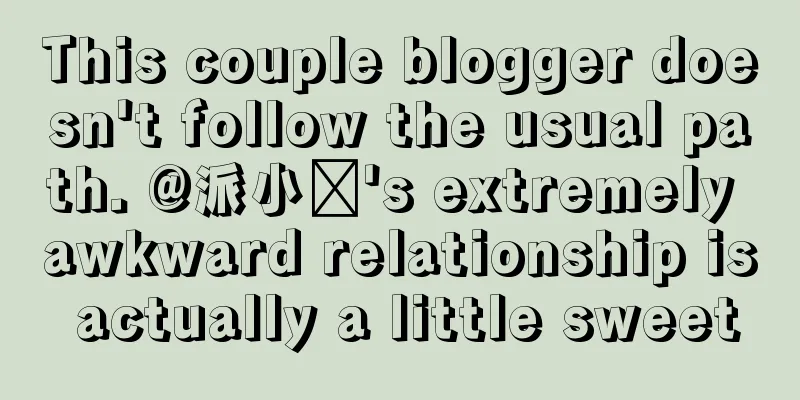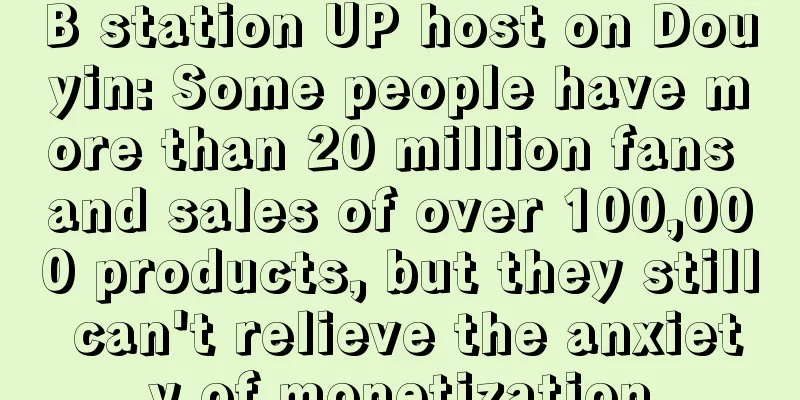Types of copywriting | The difference between new media copywriting and advertising copywriting

When we talk about copywriting, chances are we’re not talking about the same thing. As a position and function in the advertising and marketing industry, the context of the word "copywriter" has changed dramatically in the past twenty years. Although we still use the same word today, its meaning has long been very different. When we talk about something, we should first clearly define the concepts we are using and what they specifically refer to. As the saying goes, if the name is not right, the words will not flow, and if the words are not flowing, the things will not work. It is very important to grasp the essence and the ins and outs of the concept. For copywriters, it is also necessary for us to sort out what we are talking about. Initially, copywriting was discussed in the context of advertising, referring to a position in advertising companies, especially 4A advertising companies. This position can be said to be both basic and core. It is basic because it is an entry-level position, and as you move up the career ladder you will become a senior copywriter, creative director, executive creative director, etc. It is core because the core job of an advertising company is to produce creativity, and in the advertising industry creativity is mainly completed by a copywriter and an art director, with the copywriter being responsible for text and the art director being responsible for pictures. As for copywriting works, that is, the text forms that copywriters mainly create in their daily work are as follows:
Apart from soft copy, other texts are very important to brands, and can be said to be the essence of brand communication and the center of brand strategy. Moreover, these copywritings are very strategic. If copywriters want to write these things well, they must understand business and the market, understand users, have insight into human nature, and have the power to express strategic ideas in just a few words. When the Internet emerged, especially in the years when Weibo, WeChat and e-commerce dominated the mainstream of online marketing, the copywriting we talked about became copywriting in the context of new media. At this time, the actual job position of the copywriter is the new media operation of the Party A company, or the editor of some MCN-like companies. The copywriter in the context of new media specifically refers to the following:
To write these copies well, although theoretically one also needs to understand the market and consumers, companies’ pursuit of these copies is primarily in quantity and effectiveness (efficiency) rather than quality. The requirements for consumer insights and strategic thinking are not that high, and creation is not difficult. In addition, almost every company is opening accounts and publishing content, so the demand for new media personnel has increased dramatically, creating a huge group of copywriters. This is why there was a surge in copywriting books and copywriting courses between 2015 and 2019. At that time, various new media copywriting skills and other content quickly flooded the Internet, and the most published marketing books were copywriting books. However, the fact is that advertising copywriters and new media copywriters are two completely different species, and there is a promotion gap. We must be clear that the types of copywriting written by the two are completely different, and the starting point and operation logic of creation, as well as the methods of learning and training are quite different, but many people do not realize this and simply call it "copywriting". This will bring many problems. Especially with the rapid development of AI in the past two years, it is no longer a new thing for artificial intelligence to write copy. Although the content written by AI such as Xiaohongshu promotion, Moments copy, product long articles, product details pages, etc. cannot be said to be perfect, they are at least usable. Many copywriters fear that they will be replaced, but there is no need to worry. Let me be clear, at this stage, the copywriters that can and are being replaced by AI are new media copywriters, and it will take a long time for AI to replace advertising copywriters, because the key to writing this type of copy well is logic, humanity, and creativity, which AI does not yet possess. And I have always felt that with the help of AI, kicking new media copywriting out of the copywriter's job responsibilities will be a great thing for the position and function of copywriting. Because the main demand of enterprises for new media copywriting is large quantity, low price, fast and efficient, and they do not have such high requirements for content quality. For example, if an enterprise is doing content seeding, it needs 200 seeding notes a day. If these 200 notes are written manually, not only will the efficiency be low, but the labor cost will be ridiculously high. But if it is generated by AI, it can be said to greatly reduce costs and increase efficiency. New media copywriting is essentially a physical labor in the form of mental labor. It requires creativity, but in most cases it is simple and repetitive textual labor. This type of work is most suitable for AI to do. You can see that the types of work that AI can replace at the current stage also belong to this type. When AI liberates human resources from this simple and repetitive labor, we can spend our time and energy on more creative work. Just like when I first entered the industry and worked as a small copywriter, the most important job for me was to write slogans. Although a slogan is only one sentence, in order to write it well, you need to conduct in-depth research on the brand market and consumers, and invest a lot of time to repeatedly ponder words, come up with concepts, and look for inspiration. But at the same time, I often have several soft articles to write. The requirements for writing soft articles are not that high, but each soft article also needs several thousand words, which is very time-consuming. If there is AI to help me write soft articles, I can concentrate on writing slogans, then my work efficiency will definitely be greatly improved. Of course, AI can also write advertising copy like slogans, but if you directly tell AI: write a slogan for brand XX, then it will be difficult for you to get a good answer; or AI can write more than a dozen for you, but you have no way of judging which one is the best. If you want AI to give good answers, you have to ask good questions, such as giving AI more specific prompts, telling it what the core message and point of view you want to express, who your target audience is, and what style of copywriting you want, so that AI can write better and better. There used to be a joke on the Internet that said: AI may replace human labor, but with my boss’s level, he may not be able to clearly express his needs. This statement is actually true in a sense. A good question is half the answer, and the ability to ask questions is called prompt engineering in AI, which is a module that AI is vigorously developing. Train yourself to write prompts, which determines your efficiency in using AI. Just like in the past, advertising companies would give a brief before asking copywriters to work. Tell them that you are going to write a slogan, manifesto, headline, etc. No matter what you write, you must first know—— What is the communication purpose behind the copy? Who is the target audience? What is the key insight? What is the single appeal? Where is the media used for the copy? What is the tone and style of the copy? And what other necessary elements need to appear in the copy? In the past, advertising companies have always emphasized that without a good brief, there would be no good creative products; briefs must be provided for daily work, and verbal work requirements are not allowed. In fact, the point is not to follow this form and process, but to standardize your thinking and organizing your work systematically according to the structure of the brief. This is crucial. For copywriters, the best way to train their abilities is to understand the thinking behind this process and follow this thinking process to create copy, rather than the three tricks for screen-sweeping copy, the four headline techniques that can be directly applied, the five-step methodology for selling copy, and so on. However, it is obviously too basic and naive to emphasize the importance of brief nowadays, and these old-fashioned things are not fashionable enough, which will make you look particularly outdated and old school. When I was a director, I had 4 or 5 copywriters under me. Before each brainstorming meeting, I would assign them homework and requirements. Then during the meeting, the copywriters would explain to me the copywriting and ideas they thought of one by one, and then we would discuss together, improve and re-create them, and finally I would decide which copywriting or idea to use. If I feel that none of them are good, then I will further explain the requirements of the brief to them, and tell them which sentence or idea I think is on the right track, and they can dig deeper in this direction. This is the standard copywriting process. Now, when you ask AI to write copy for you, isn’t it actually you giving AI a brief? From another perspective, Kimi, Mita, Tongyi, Wenxin and other big models are the copywriters under your command. They are responsible for writing, and you are responsible for giving briefs, judging the works, making decisions, and giving guidance on the next step of work. So AI is not replacing you, but helping you get promoted. You are no longer a copywriter, you are a director. Now your core competitiveness is not how to write copy, but how to write copy briefs and how to decide which copy to use. To be more specific, the business analysis and logical thinking ability behind copywriting, as well as creative thinking and insight into consumers are the key points to be improved. Audi Q7 used to have a classic line in its copywriting: "What matters is not that it becomes stronger, but that you become stronger." With the advent of the AI era, each of us has been asked to upgrade our thinking and abilities, to become the director of AI, the "copywriter," or the overbearing president of AI, the "secretary and personal assistant." Nowadays, everyone wants to learn how to use AI and apply it to their work. In fact, these thoughts are the guidance and direction of what we learn in AI. Author: Empty-handed WeChat public account: Empty Hands (ID: firesteal13) |
<<: How should the performance appraisal of Xiaohongshu’s media team be formulated and managed?
>>: The four steps of marketing copywriting
Recommend
Do I need to open a company if I want to do cross-border e-commerce? What are the requirements for opening a store?
With the development of globalization and the adva...
Wong Kar-wai's "Flower", advertising placement on the ceiling
The TV series "Fanhua" has ended. There ...
When will Douyin’s food delivery service become a big hit?
Do you still remember "Xindong Takeaway"...
What are the key points of Shopee operation optimization? What are the operation skills?
With the rapid development of the e-commerce indus...
Does it cost money to open a temu store? Do I need a business license?
Some sellers are interested in the cross-border e-...
Is it difficult for old brands to renew themselves? Baixiang CNY Marketing provides a solution
How can domestic time-honored brands continue to o...
In-depth review of Xiaomi’s automotive communication strategy
Looking back three years, from a marketing perspec...
How does Lazada do self-delivery? Introduction to the delivery process
Lazada is the leading e-commerce platform in South...
Are the products sold on Amazon Overseas Shopping genuine? Is Amazon Overseas Shopping reliable?
With the development of the Internet, people can e...
Is Pang Donglai the standard answer to China’s retail industry?
In the landscape of China's retail industry, P...
Hema feels like it's back on track
This article deeply analyzes the strategic adjustm...
Faced with ESG, where fresh graduates can earn up to 40,000 yuan a month, how should marketing be integrated and leveraged?
In today's highly competitive workplace, the E...
What is the Lazada transaction fee? How does Lazada charge commission?
If you want to open a store on Lazada, merchants m...
Is Amazon lending real? Where does the Amazon loan go?
Amazon, one of the world's largest e-commerce ...
With over 200 million views and 3 million followers, has traditional culture become the darling of short video traffic?
Traditional culture has always been a traffic sour...









